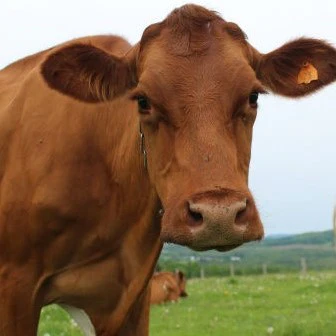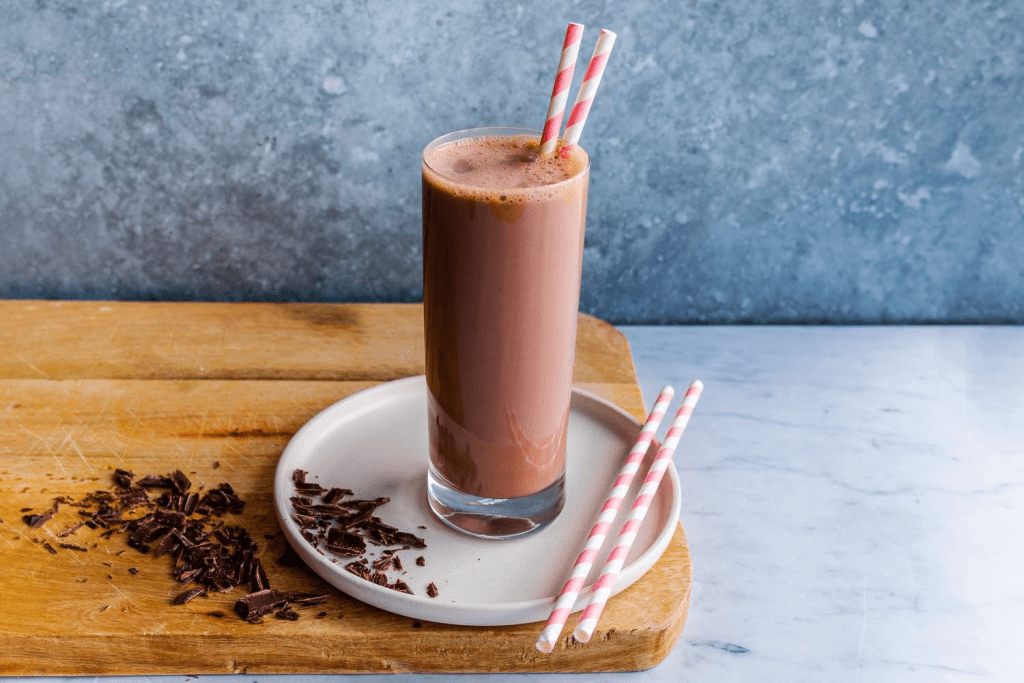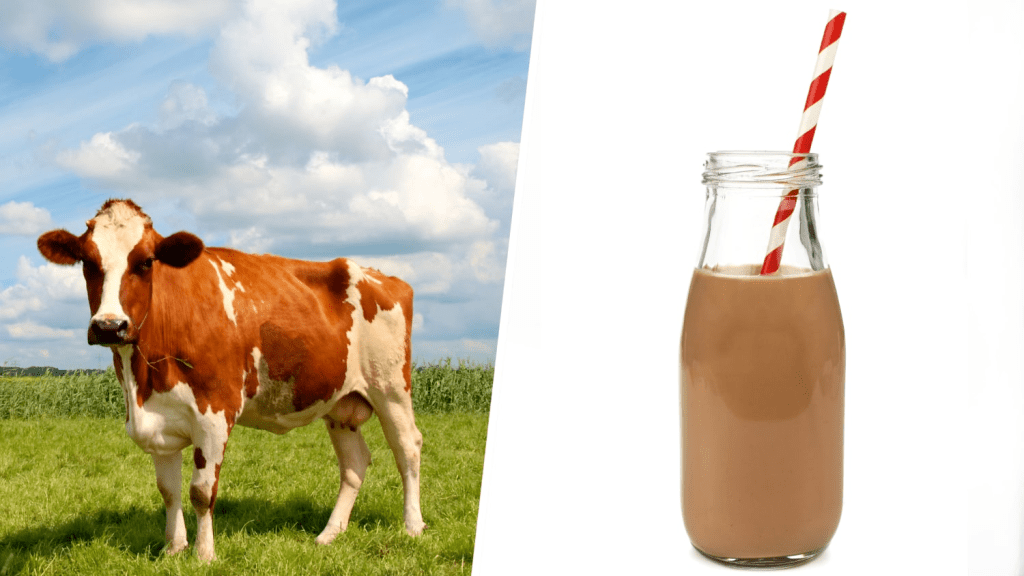You’ve probably heard the wild claim that chocolate milk comes from brown cows. Surprisingly, about 7% of American adults actually believe this! That may sound unbelievable, but a survey conducted by the Innovation Center for U.S. Dairy revealed that many people are disconnected from the origins of the food they consume. In fact, almost half of the adults surveyed didn’t know where chocolate milk comes from.
Let’s dive in and bust this myth once and for all, and clarify how chocolate milk is really made.

Chocolate Milk Doesn’t Come From Brown Cows
The idea that chocolate milk comes from brown cows is a complete myth. It’s important to understand that all dairy cows, regardless of their color, produce the same type of milk—white milk, rich in nine essential nutrients. Whether you’re looking at a black-and-white Holstein or a Brown Swiss, the milk is the same.
So, where does chocolate milk really come from? Simply put, chocolate milk is made by adding cocoa and sugar to regular white milk. If you’ve ever stirred chocolate syrup into a glass of milk at home, you’ve essentially recreated the process that dairy companies use to make chocolate milk.
Breaking Down the Process: How Chocolate Milk is Made
The process of making chocolate milk is straightforward. White milk, which comes from cows of various breeds, is mixed with cocoa powder (or chocolate syrup) and sweetened with sugar. The result is the delicious chocolate milk that’s sold in stores and loved by many.
The key ingredients—milk, cocoa, and sugar—are blended to create a smooth and sweetened drink. Some commercial brands also add a bit of flavoring or stabilizers to improve texture and shelf life, but the process is not much different from what you can do at home in your kitchen.
The Myth of the Brown Cow: How Did This Start?
While it may be hard to pinpoint exactly where the myth that chocolate milk comes from brown cows started, there are a few reasons why people might be confused. Dairy cow breeds come in a variety of colors, and it’s easy to assume that the color of the cow affects the milk they produce. However, that’s not the case.
In the United States, there are seven popular dairy cow breeds. Holstein cows, with their classic black-and-white spots, make up about 90% of the dairy cows in the country. Other breeds, like the Jersey, Brown Swiss, Guernsey, Ayrshire, and Milking Shorthorn, tend to have brown or reddish-brown coats. Despite their different appearances, all these cows produce white milk.
The confusion may stem from the fact that brown cows are more commonly seen on farms, leading some people to assume that their milk is different. But just as a red apple and a green apple are both apples, milk from brown cows and black-and-white cows is still just milk—plain, white, and nutrient-rich.
The Disconnect Between Farm and Food
One of the reasons this myth persists is the growing disconnect between consumers and farming. According to the Innovation Center for U.S. Dairy, less than 2% of Americans are directly connected to farming today. As society becomes more urbanized, fewer people have firsthand experience with how food is produced. This makes it easier for misinformation to spread.
Many people no longer grow up around farms or understand how milk gets from the cow to the grocery store. This lack of knowledge contributes to misconceptions about basic food production, like the idea that chocolate milk could come from a certain breed of cow.
How to Reconnect with the Source of Your Food
To better understand where our food comes from, it’s helpful to make an effort to reconnect with farming and agriculture. Visiting local farms, attending agricultural fairs, or even learning about the food supply chain can help dispel myths like the brown cow misconception. By gaining a clearer understanding of farming, consumers can make more informed choices about what they eat and drink.
Supporting educational programs that teach kids about farming is another way to ensure future generations have a better understanding of where their food originates. These initiatives help bridge the gap between farm and table, ensuring that people grow up with the knowledge they need to make informed food choices.
The Health Benefits of Chocolate Milk

Now that we know chocolate milk doesn’t come from brown cows, let’s take a moment to appreciate what chocolate milk really is—a delicious, nutritious beverage. Chocolate milk contains the same nine essential nutrients as white milk, including calcium, vitamin D, potassium, and protein. The addition of cocoa and sugar may increase the calorie count slightly, but it remains a wholesome option, especially for those looking to refuel after exercise.
In fact, chocolate milk has been touted as a great post-workout recovery drink because it contains the perfect combination of carbohydrates and protein to help muscles recover after strenuous physical activity. It also provides important electrolytes like sodium and potassium, making it a smart choice for athletes.
The Fun of Making Your Own Chocolate Milk

If you’ve ever made your own chocolate milk, you know how easy and fun it can be. All it takes is a glass of white milk, a spoonful of cocoa powder or chocolate syrup, and a little bit of sugar. Stir until smooth, and you’ve got a rich, creamy treat.
Experimenting with different amounts of chocolate and sweetness allows you to customize your drink exactly how you like it. Whether you prefer a light chocolate flavor or a more indulgent experience, homemade chocolate milk is a simple joy anyone can enjoy.
Conclusion: Busting the Chocolate Milk Myth
It’s time to set the record straight—chocolate milk does not come from brown cows. All cows, regardless of their color, produce the same nutrient-packed white milk. Chocolate milk is simply a blend of white milk, cocoa, and sugar, creating the delicious drink we know and love.
With so many people disconnected from the source of their food, it’s easy to see how myths like this can spread. But with a little knowledge and curiosity about farming, we can all become more informed about the origins of our food. So, the next time you enjoy a glass of chocolate milk, you can do so knowing exactly where it comes from—and that brown cows have nothing to do with it!


